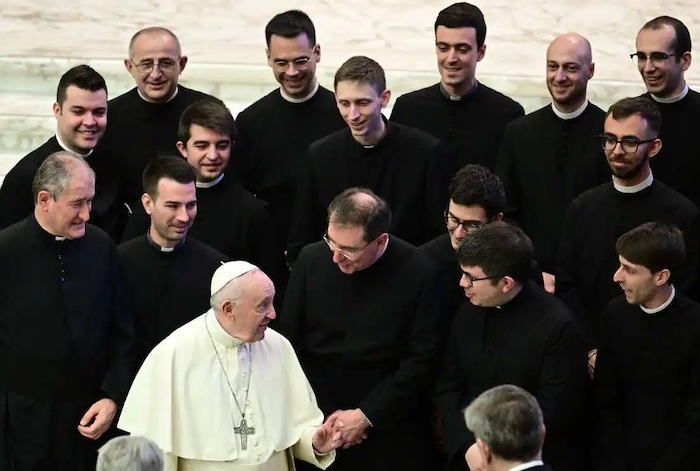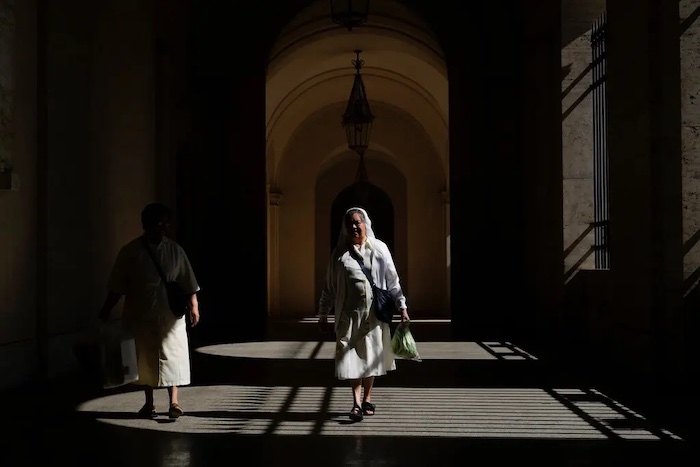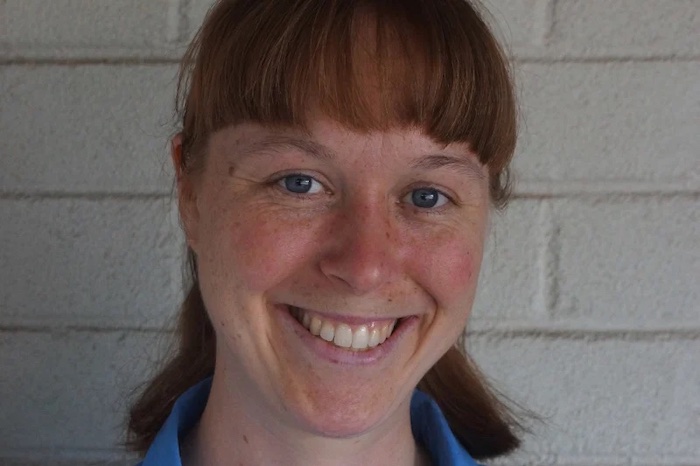— The number of seminarians, priests, and men and women in religious orders declined worldwide in 2021

Pope Francis meets with priests during the weekly general audience on March 23, 2022, at Paul-VI hall in The Vatican.
By Carol Glatz
The number of Catholics and permanent deacons in the world rose in 2021, while the number of seminarians, priests, and men and women in religious orders declined, according to Vatican statistics.
At the end of 2021, the number of Catholics in the world reached 1.378 billion, up 1.3 percent from 1.36 billion Catholics at the end of 2020, according to the Vatican’s Central Office of Church Statistics. By contrast, the world’s population increased by 1.6 percent over the same period.
The Vatican newspaper, L’Osservatore Romano, published a brief overview of the global numbers March 3.
While Catholics remained about 17.67 percent of the global population, their numbers grew in Africa by about 3.1 percent and in the Americas and Asia by about 1 percent each, said the summary, which was based on numbers reported Dec. 31, 2021.
The Americas have 48 percent of the world’s Catholics and Brazil is the country with the greatest number of Catholics in the world with almost 180 million people.
While the Americas have 48 percent of the world’s Catholics, it only has 29 percent of the world’s priests. Just a little over 20 percent of the world’s Catholics live in Europe, yet 39.3 percent of the world’s priests minister there.
The Vatican reported that 19.3 percent of the world’s Catholics live in Africa and are served by more than 12 percent of the world’s priests; 11 percent of Catholics live in Asia and are served by more than 17 percent of the world’s priests; and just 0.8 percent of the global Catholic population lives in Oceania where 1 percent of the world’s priests live.
The Catholic Church also had 5,340 bishops at the end of 2021, a slight decrease from 5,363 at the end of 2020. Globally, the average is 76 priests per bishop, it added.
The total number of diocesan and religious order priests decreased globally by 0.57 percent to 407,872, the Vatican office said. The specific decreases were 0.32 percent for diocesan priests and 1.1 percent for religious-order priests.
The statistical office noted a “serious” imbalance in the ratio of Catholics per priest in the Americas and Africa. Globally there is one priest for every 3,373 Catholics in the world. But the ratio is one priest for every 5,534 Catholics in the Americas and one priest for every 5,101 Catholics in Africa. There are 1,784 Catholics per priest in Europe, 2,137 Catholics per priest in Asia, and 2,437 Catholics per priest in Oceania.
The number of religious brothers decreased in 2021 to 49,774 — a drop of about 1.6 percent from 50,569 the previous year, the office said. The numbers went down in every region except Africa where it increased by 2.2 percent.
The total number of religious women, it said, was 608,958 at the end of 2021 — a decrease of 1.7 percent from 619,546 at the end of 2020.
The number of permanent deacons — 49,176 — saw a 1.1 percent increase over the previous year, with the majority of them serving in the Americas.
The number of seminarians decreased globally by 1.8 percent to 109,895. About 61 percent of them are seminarians for a diocese and 39 percent of them for a religious order.
The number of seminarians has been declining each year since 2013, the Vatican office said. The only increase by region for 2021 was in Africa with 0.6 percent and the sharpest decline in the number of seminarians was in North America and Europe with a 5.8 percent decrease each in 2021.
Complete Article ↪HERE↩!




